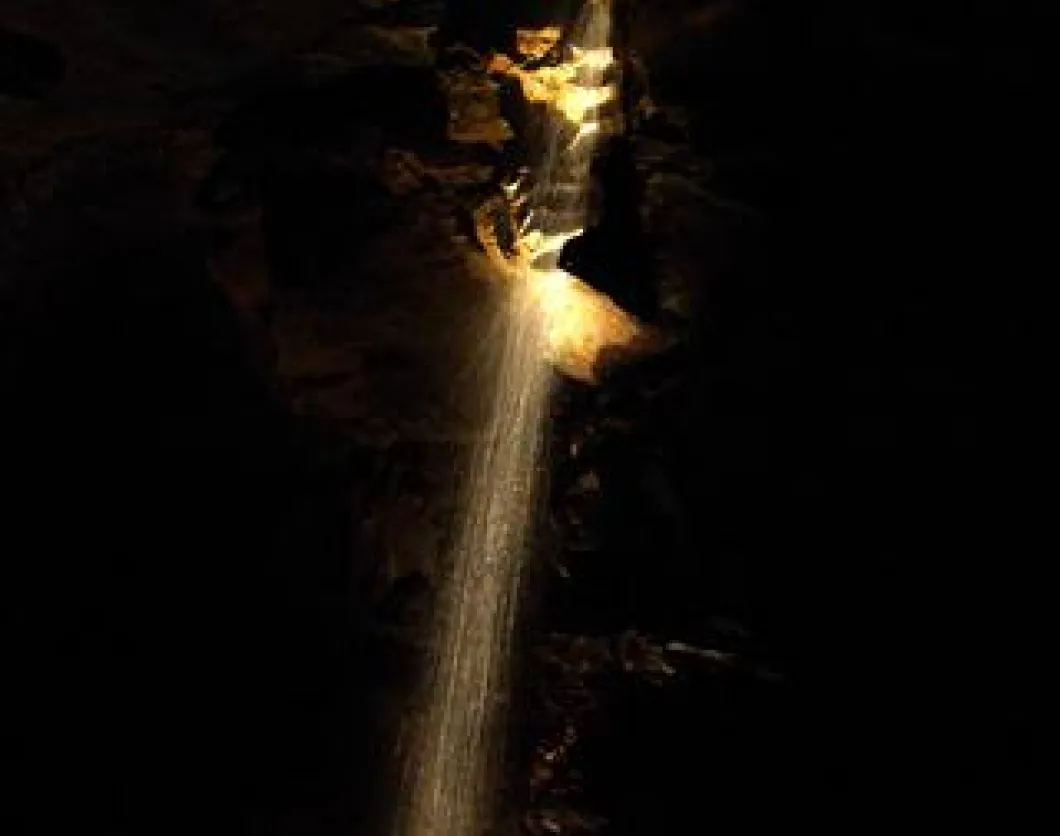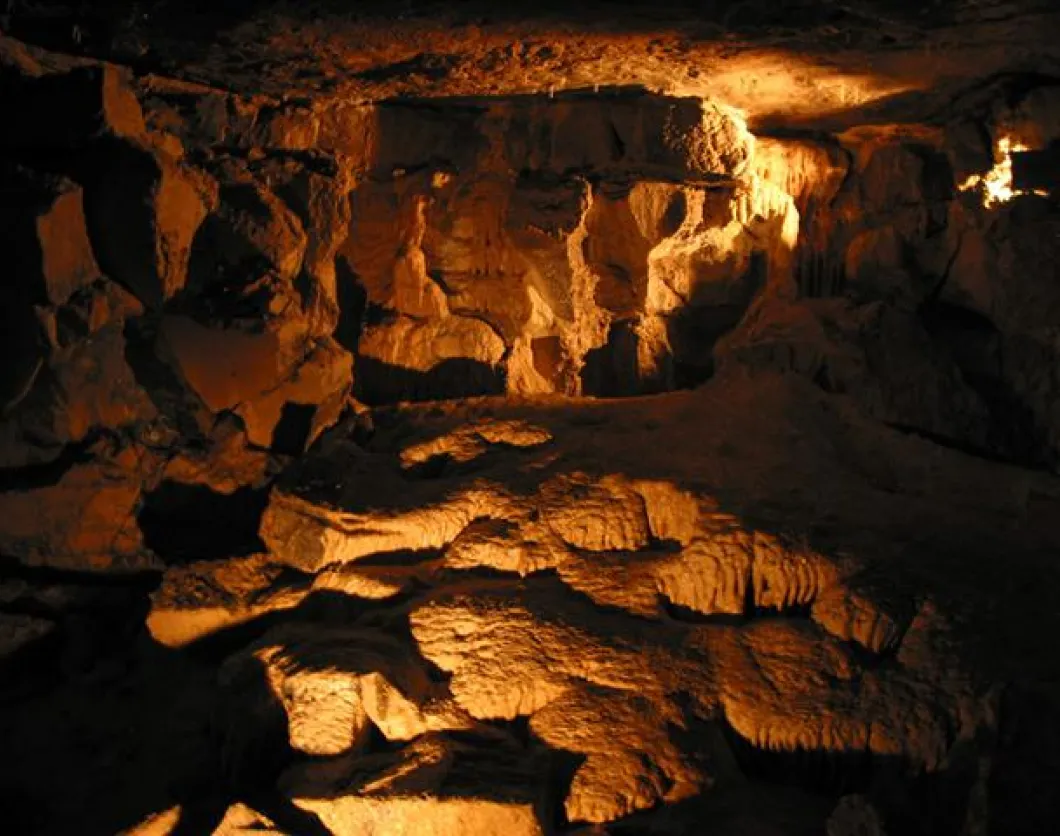Have you seen a waterfall in a cave? Aillwee Cave is one of the many thousands of ancient caves beneath the karst-landscape of the Burren in northwest Country Clare, Ireland. The cave is Ireland's premier show cave and is the most famous. Visitors are guided on a 35 minute stroll through caverns, over bridged chasms, beneath weird rock formations and alongside a thunderous waterfall.
The name Aillwee is derived from the Irish Aill Bhuí which means yellow cliff. The complex consists of over a kilometer of passages leading into the heart of the mountain.
History
Aillwee Cave is one of the oldest caves in Ireland. This cave was formed by the glacial melt waters of an early ice age. The erosive power of the waters carved out a subterranean river deep underneath Aillwee mountain. This river has subsided since the last ice age, leaving behind one of Ireland's most stunning caves.
The cave was discovered by Jack McGann, a local herdsman, in 1940. One day, Jacko was looking after his sheep at the foot of Aillwee Mountain with his dog. The dog gave chase to a rabbit, following it up the mountain and into a small opening in the rocks. Jacko explored this opening with nothing but a candle to guide his way, finding his way right as far as the Great Cascade.
The cave was left alone for 33 years after this. In 1973, Jacko talked to group of cavers and told them of his find. The group, from Bristol University, under the leadership of Dr. Tratman, explored the caves as far as was possible. A massive fall of boulders sealed the passage beyond the Cascade chamber.
Open to Tourists
In 1975, the land surrounding the cave was sold to two local families interested in opening the cave to the public. December saw the entrance tunnel lowered a little to make access easier and rails, lighting, cabling and pathways were laid as far as the Cascade. This section now remains visually much as it appeared to Jacko and the first explorers.
The rock pile from the passageway between the Cascade and Midsummer's Cavern was excavated in 1977, revealing a further 350 meters of cave. This was opened to the public after continuing the lighting and path system.
In 1991, it was decided to join the final stop on the tour, the highway to the entrance of the cave via an alternate route to create a circular tour. Marine Blast Company together with Nick Barnes undertook the massive task of drilling and blasting through 255 meters of solid limestone.
Life in the Cave
Caves have always provided refuge for wild animals and indeed for humans, but few animals actually live all of their lives underground. This is because the dark, cool, cave environment lacks a supply of food.
Aillwee Cave was inhabited by animals for thousands of years prior to its discovery by man. The bones of a brown bear were found at Bear Haven, together with a series of shallow excavated pits. These may have been used as hibernation pits scraped out by bears. Bears have been extinct in Ireland for over 1000 years so the Aillwee bear may be of great antiquity.
The "Praying Hands"
There are many splendid examples of formations in the Aillwee Cave. Calcite formations in the form of a "Wasps Nest" and the "Praying Hands" and "the Carrots" are to be seen as well as many others including a magnificent display of Straw Stalactites.
In the Aillwee Cave most of the formations are very recent in the history of the cave itself. The small knobbly stalagmites on the floor of Mud Hall took over 1,000 years to reach their present size 8,000 years ago. The larger stalagmites in Midsummer Cavern took 5,000 years to form. Some samples of calcite taken from deep inside the cave started to form 350,000 years ago.
www.aillweecave.ie
www.nci.ie










